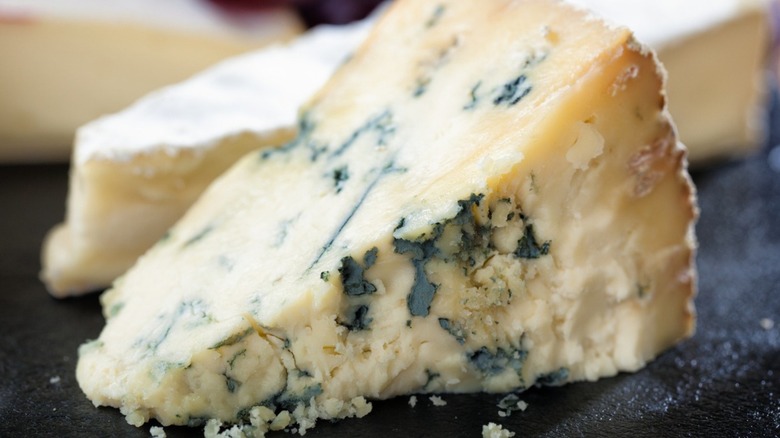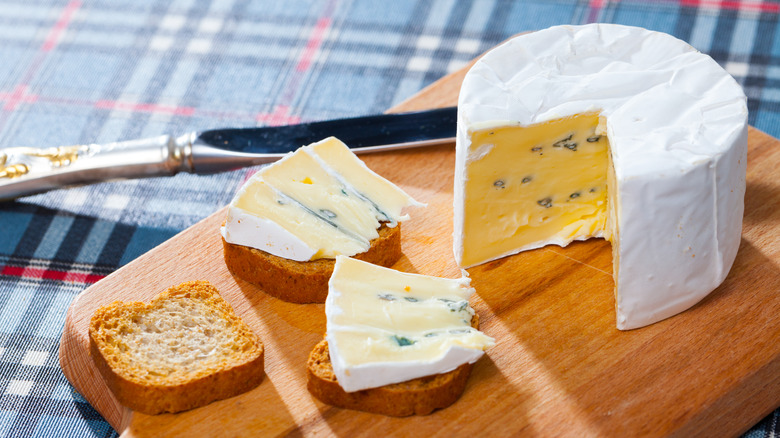Why Some Fancy Blue Cheeses Come Wrapped In Foil
Next time you buy high-quality cheese, pay attention to what it's wrapped in: Your cheesemonger will probably package most cheeses in special paper — but many wheels of blue cheeses, like Roquefort, are coated with a shiny and colorful layer of foil.
This not only makes the cheese stand out but also helps it to stay better, longer. Foil is typically not porous, so this may seem counterintuitive. After all, cheeses need to breathe in order to mature properly. If you're storing it in airtight containers or plastic wrap, you're doing it all wrong and potentially suffocating the cheese. This can create off-flavors and unwanted bacteria. So why doesn't foil have the same effect on Roquefort?
Blue cheeses have different moisture and air needs than other cheeses, so foil is actually the correct choice for wheels of fancy Gorgonzola or Stilton. Due in part to the veins of blue mold that run through the wheels, blue cheeses tend to have a larger curd structure, which means they release a little more moisture — excess whey — as they mature.
Traditional cheese paper could dry out the cheese, but foil helps keep the moisture inside so the cheese remains creamy. And when it comes to oxygen exposure, foil is also the happy medium that blue cheeses need.
The secret ingredient in foil-wrapped blue cheese: Oxygen
The pattern of blue, green, or gray mold in a chunk of blue cheese might look random — but it actually helps explain why foil helps fancy blue cheeses stay fresher longer. Penicillium roqueforti, the perfectly safe-to-eat mold strain that gives certain blue cheeses their trademark color pattern and savoriness, needs oxygen to grow. When the curd is being formed into a cheese wheel, the cheesemaker adds mold cultures. But for the mold to really flourish, the cheesemaker pierces the wheel with a needle to let oxygen enter. (This is also why in blue cheese, pockets of mold are often centered around straight lines. These lines match up with small holes in the cheese's rind.)
Just like any cheese, blue cheese continues to develop and mature throughout its life. Even in your fridge, a paper wrapping would expose the blue veining to too much oxygen, which could cause the mold to overgrow and negatively affect the cheese's flavor. Foil restricts airflow just enough — but does not create a sealed-off environment like plastic wrap would. So when it comes to fancy blue cheese, foil is both elegant and functional.

